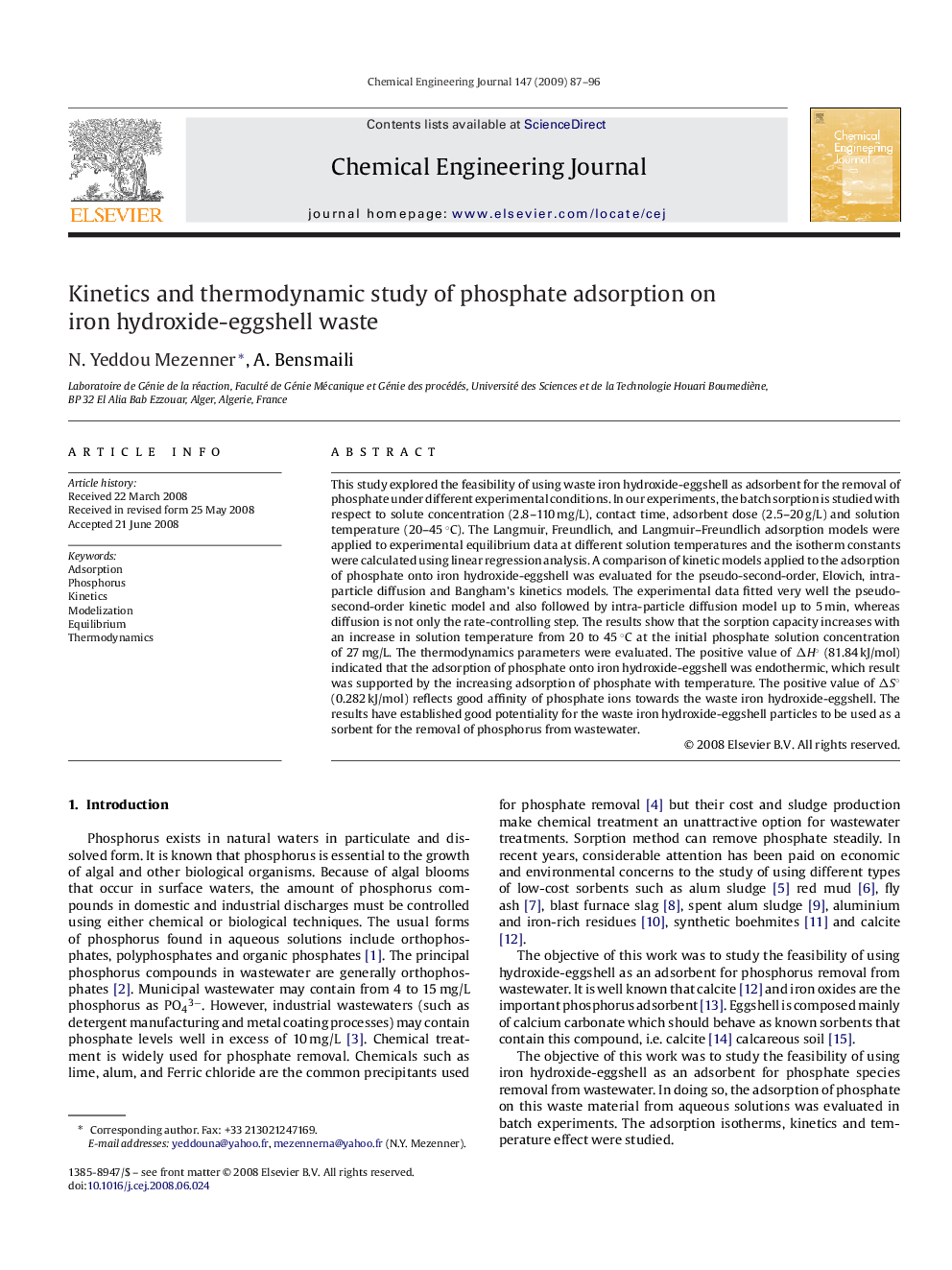| Article ID | Journal | Published Year | Pages | File Type |
|---|---|---|---|---|
| 152532 | Chemical Engineering Journal | 2009 | 10 Pages |
This study explored the feasibility of using waste iron hydroxide-eggshell as adsorbent for the removal of phosphate under different experimental conditions. In our experiments, the batch sorption is studied with respect to solute concentration (2.8–110 mg/L), contact time, adsorbent dose (2.5–20 g/L) and solution temperature (20–45 °C). The Langmuir, Freundlich, and Langmuir–Freundlich adsorption models were applied to experimental equilibrium data at different solution temperatures and the isotherm constants were calculated using linear regression analysis. A comparison of kinetic models applied to the adsorption of phosphate onto iron hydroxide-eggshell was evaluated for the pseudo-second-order, Elovich, intra-particle diffusion and Bangham's kinetics models. The experimental data fitted very well the pseudo-second-order kinetic model and also followed by intra-particle diffusion model up to 5 min, whereas diffusion is not only the rate-controlling step. The results show that the sorption capacity increases with an increase in solution temperature from 20 to 45 °C at the initial phosphate solution concentration of 27 mg/L. The thermodynamics parameters were evaluated. The positive value of ΔH° (81.84 kJ/mol) indicated that the adsorption of phosphate onto iron hydroxide-eggshell was endothermic, which result was supported by the increasing adsorption of phosphate with temperature. The positive value of ΔS° (0.282 kJ/mol) reflects good affinity of phosphate ions towards the waste iron hydroxide-eggshell. The results have established good potentiality for the waste iron hydroxide-eggshell particles to be used as a sorbent for the removal of phosphorus from wastewater.
